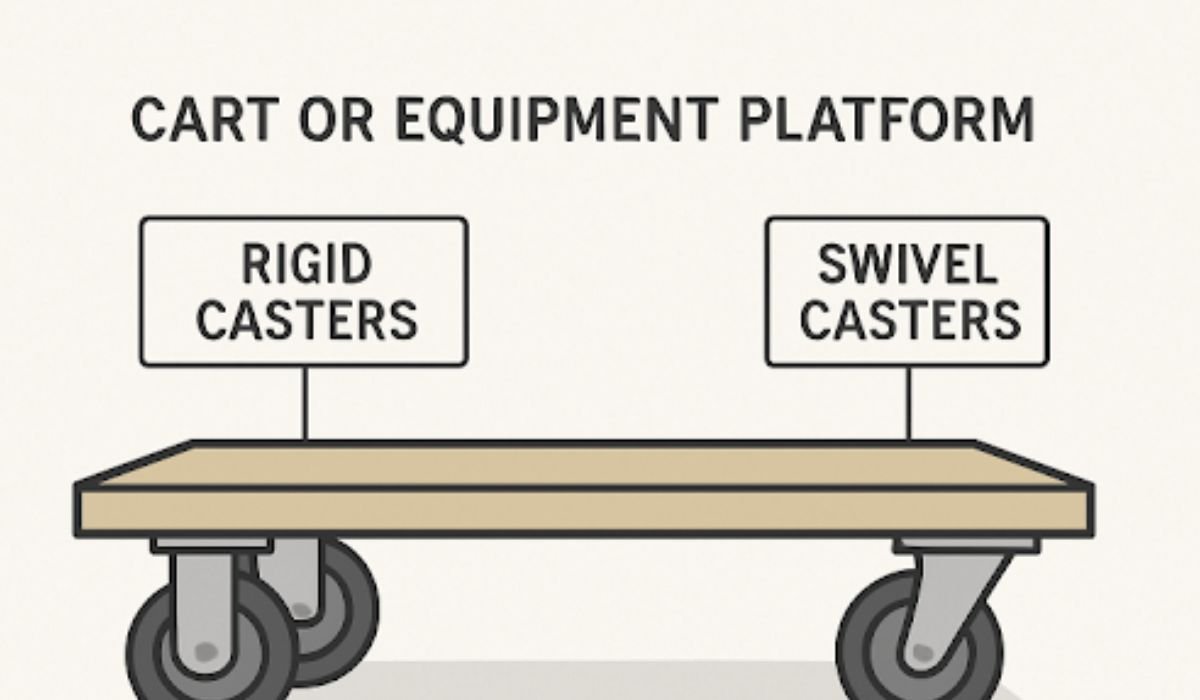Key Takeaways
- Rigid casters provide superior stability, load capacity, and durability for straight-line movement.
- Situational analysis—such as load requirements and operational environment—is crucial before selecting rigid or swivel casters.
- Combining rigid and swivel casters can create the ideal balance of stability and maneuverability in many equipment designs.
- Practical applications range from manufacturing lines to heavy-duty warehouse transport systems.
Table of Contents
- Understanding Rigid and Swivel Casters
- Advantages of Rigid Casters
- When to Opt for Rigid Casters
- Combining Rigid and Swivel Casters
- Considerations for Caster Selection
- Final Thoughts
Understanding Rigid and Swivel Casters
Choosing the correct caster type is a foundational decision in equipment and industrial design, with far-reaching implications for safety, efficiency, and usability. Casters come in two primary forms: rigid casters and swivel casters. Rigid casters are engineered for linear movement, with a wheel mount that does not pivot, while swivel casters are built for 360-degree rotation—perfect for multidirectional mobility and easy turning.
The distinction between these two caster types centers on their movement profile and mechanical structure. Rigid casters hold a fixed orientation and move along a straight track. In contrast, swivel casters incorporate a rotating yoke, allowing equipment to pivot and maneuver around obstacles, tight turns, or confined spaces. Understanding these differences is key to selecting the right caster for your application.
Advantages of Rigid Casters
Rigid casters are chosen for several critical advantages that other caster types may lack:
- Enhanced Stability: The fixed alignment of rigid casters ensures the equipment follows a predictable path, reducing the likelihood of accidental veering or tipping—especially vital for tall or top-heavy loads.
- Higher Load Capacity: Due to their robust construction with fewer moving parts, rigid casters can often support heavier weights than their swivel counterparts, making them the preferred option for industrial carts and heavy-duty transport systems.
- Durability and Longevity: With a simpler build, rigid casters experience less wear and require less maintenance, resulting in increased operational time and lower lifetime costs for businesses prioritizing dependable material handling solutions.
When to Opt for Rigid Casters
Rigid casters are the smart choice for environments and equipment requiring straight-line movement or when the stability of transported goods is paramount. Rigid casters deliver superior control and reliability if your operation involves moving goods across uniform routes, such as on assembly lines or between set stations. For example, keeping heavy carts on a predictable path in large manufacturing environments ensures efficiency and worker safety.
Rigid casters will also benefit equipment intended to handle substantial loads. The increased load capacity reduces the risk of caster failure, protecting personnel and expensive equipment. Moreover, when equipment is moved over long distances or down long corridors, rigid casters reduce the effort required to keep movement on track and minimize operator fatigue.
Combining Rigid and Swivel Casters
Many industrial carts and equipment use a hybrid approach, combining rigid and swivel casters for optimal mobility and stability. The most common setup places two rigid casters at one end—usually the rear—and two swivel casters at the other. This configuration enables easy, straight-ahead movement when pushing or pulling, but still offers responsive steering when navigating corners or repositioning in tight areas.
This design philosophy is widely adopted in both manufacturing and logistics. By combining the strengths of both caster types, organizations maintain safe, controlled, and highly functional equipment layouts, capable of overcoming various workspace challenges.
Considerations for Caster Selection
- Load Requirements: Always estimate the maximum load, factoring in dynamic and static weights, to guarantee long-term caster performance and workplace safety.
- Operational Environment: Evaluate space limitations, surface conditions, and movement patterns. For example, rigid casters are less suited to tight turns or confined spaces where multidirectional movement is essential.
- Maintenance Needs: Factor in the anticipated maintenance: fewer moving parts mean less upkeep for rigid casters, an important aspect for operations seeking to minimize downtime.
Final Thoughts
Rigid casters are a cornerstone in equipment design when stability, linear movement, and high load-bearing requirements are of primary concern. You can ensure safer, more efficient, and cost-effective operations by evaluating your application’s unique needs and the advantages of rigid casters. Incorporating these best practices into your equipment planning and workflow design enhances productivity and secures a safer work environment for everyone involved.
YOU MAY ALSO LIKE: Pioneering Pure Water Piping: Modern Materials, System Design, and Safety Standards











